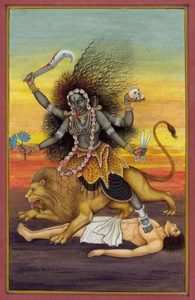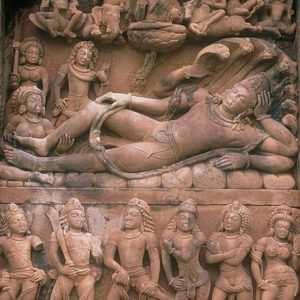Deep inside the Deodar forest near Almora in Kumaon region there is a 7th century temple complex dedicated to Lord Shiva. Deodars are considered extremely sacred among trees, and areas where such forests exist (Western Himalayas from Gandak river in central Nepal) have a pure and rare energy. The Jageshwar temple complex consists over 100 small temples dedicated to different forms of Devi, Surya, Ganapati, Vishnu with the main deity being Shiva.
According to the ASI, some of the temples inside belong to the post-Gupta or the second half of 1st millennium while others belong to the 2nd millennium. Other sources claim that the temple complex was initially build during the reign of the Chand kings who ruled that region, until Adi Shankara during his spiritual yatra of India, came there and convinced the locals rules to expand the temple considering that the place had a special spiritual power – for Jageshwar is the area where Naga-s worshiped Shiva. Hence another name of the Linga is Nagesha, Lord of Naga-s.

Nagas are not merely snakes as we know it. At an ancient time they were fathered by Rshi Kashyapa; they were extremely powerful entities but suffered from an excess of jealousy and bikering. Except Sesha would turned completely spiritually and performed exceptional sadhana. After the Mahabharata war was over a sarpa satra yagya was performed by Emperor Janamejaya of the Kuru empire to avenge the death of his father. However the sacrifice was stopped in the middle, and one transmission of the epic Mahabharata started from this setting. Nagas however are experts in Yogic and occult methods. They knowledge of the unseen worlds is beyond compare. At a later date many exceptional Yogic masters like Patanjali were considered as an incarnation of some great Naga-s to teach secrets of Yoga to humanity. At the very entrance of the main shrine inside Jageshwar complex there is a replica of a snake on the doors indicating the relevance of this place for Nagas.
Jageshwar dham is currently maintained by the ASI considering its antiquity and relevance to the cultural heritage of India, though regular worship is still carried on. As per some scholars it is one of the hidden jyotirlinga’s of Lord Shiva. In any case the exceptional and powerful natural setting of this ancient temple is perhaps ideal for certain rare kinds of sadhanas and siddhis.


